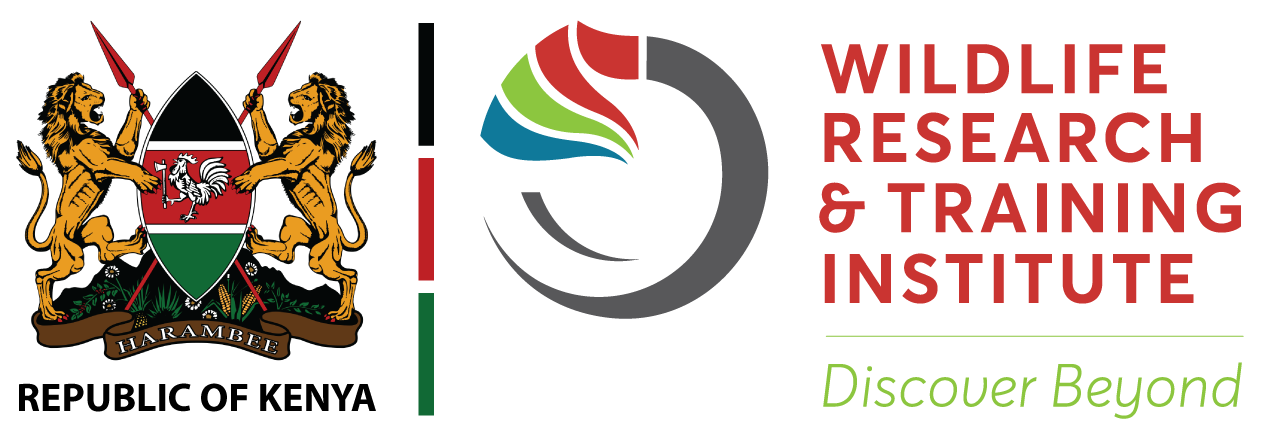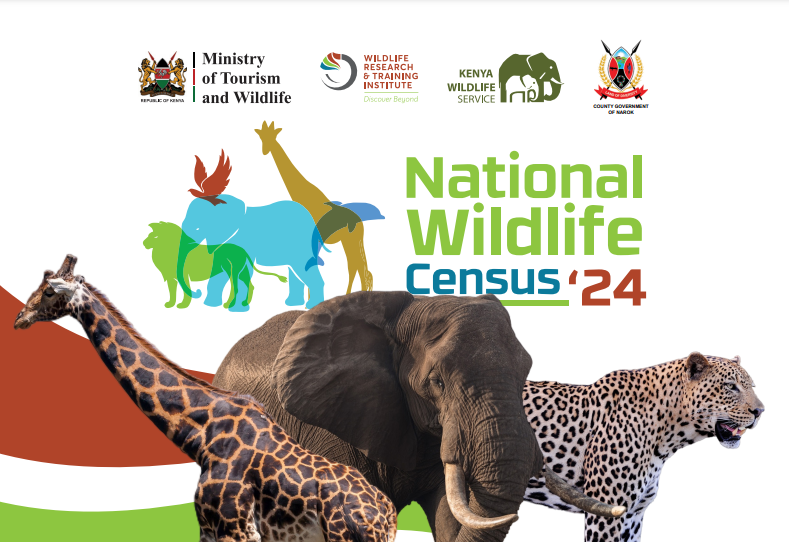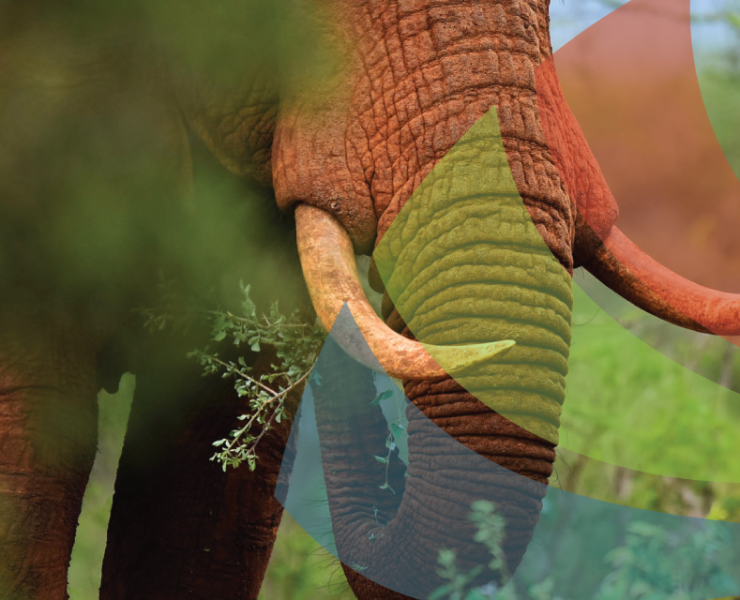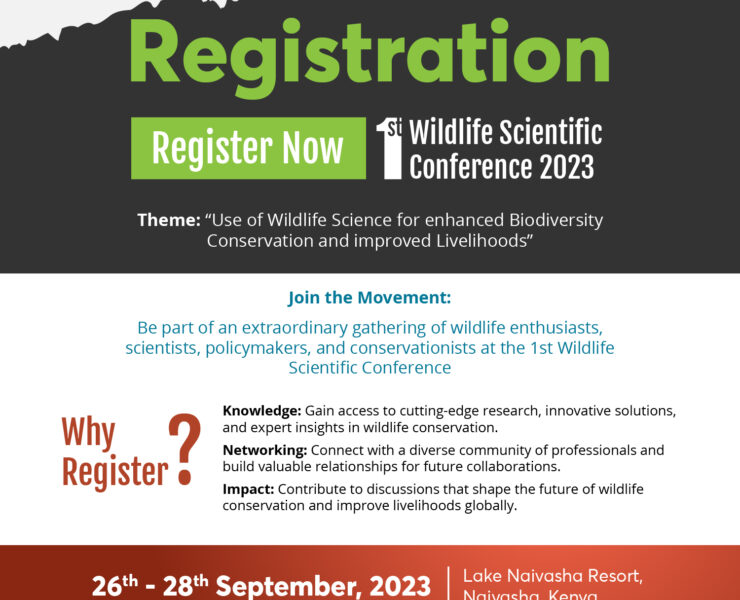National Wildlife Census 2024
DATE & TIME:
June 19, 2024 - June 25, 2025 All Day
Wildlife censuses are supposed to be undertaken every three (3) years in line with ecological cycles of fecundity and mortality. Effective management requires knowledge of current status of wildlife as envisioned in Pillar 3 of the National Wildlife Strategy 2030 on ‘Evidence based decision making’. Data obtained from wildlife censuses is also used to inform management and improvement of the tourism product in space and time; It is a legal requirement to conduct wildlife surveys as outlined in the Wildlife Conservation and Management Act of 2013.
The Ministry is obligated to gather and provide information to facilitate the development of two (2) critical reports: the wildlife conservation status report (Section 49, (4)) and the wildlife resources monitoring report (Section 64, (3)) to be presented to Parliament by the Cabinet Secretary. The reports inform decision-making and policy formulation regarding wildlife conservation and management in the country.
They also ensure transparency, accountability, and oversight in the management of wildlife resources; Kenya’s key wildlife landscapes are currently facing multiple challenges, including increasing human and livestock population, impacts of global climate change, the spread of invasive and alien species, and the dangers of infectious zoonotic diseases. These have resulted in serious habitat losses and wildlife mortalities as witnessed during the 2022 drought. It is therefore important to establish the impacts of these challenges especially the impact of 2022 drought and the recent floodings on wildlife numbers and distribution; and Comprehensive wildlife data obtained from wildlife censuses will provide current data and information to support development of Counties spatial plans as well as protected areas and ecosystems management plans.
Goal and Objectives of The Proposed 2024-2025 Census
The Ministry’s main goal of the proposed census is to provide the second national status of wildlife populations and their distribution in the country since the first comprehensive national census in 2021. This goal will be achieved through the following specific objectives:
- Establish the status of wildlife populations and their distribution since the first comprehensive national census in 2021;
2. Establish the impacts of ecological shocks such as the 2022 severe drought and the above normal rainfalls (occasioning floods) received recently on wildlife numbers and distribution; and
3. Inform formulation and suggest strategies for effective wildlife conservation and management as envisioned in Pillar 3 of the National Wildlife Strategy 2030 on ‘Evidencebased decision making
Approach and Methodology
1. Aerial Total and Sample counts in Tsavo, IsioloLaikipia, and Counties eg Garissa, Turkana (NortonGriffiths (1978), Doughlas-Hamilton et al. (1996) ) and KWS Ecological Monitoring Procedures Manual.
2. Censuses for Rhino meta-populations in 19 smaller populations in Public, Private, County and Community areas through ground, water hole census and camera traps
3. Surveying & Monitoring of other endangered species using individual identification techniques, satellite collars & camera traps and other new technologieslarge and small carnivores, birds, herpetofauna, small mammals will be carried out in line with the ecological monitoring manual.
4. Ground surveys for forested species like bongos, sable antelopes, endangered primates within Aberdare ranges, Mt. Kenya, Mt. Elgon, Tana river etc. Walking transects to count the red colobus and the mangabey at Tana River Forest remnants. In small closed protected areas like Nairobi and Ruma National Parks, total ground counts using vehicles.
5. Censuses for wildlife species within coastal and inland waters, wetlands and lakes e.g. crocodiles, hippos and waterfowls in rift valley lakes, lake Victoria, 7 folk dams, lake Turkana etc. For the aquatic surveys, transects will be done using boats following standard methods outlined by Kanga et al., 2019).
The 2021 National Census
The area covered during the census was 343,380km2. 186,296km2 during aerial total count and 157,084km2 during aerial sample census. This area approximates to 59% of Kenya’s land mass – 580,367 km2. A total of 1158.23 hrs were flown during the aerial censuses. 940.80hrs during the aerial total and 217.43 during aerial sample census.
Over 30 species of mammals, birds and marine species were counted in various ecosystems during the census. Some of the iconic species counted were elephants (n=36,280), black rhino (n=897), white rhino (n=842), northern rhino (n=2), lions (n=2,589), hyenas (n=5,189), Cheetahs (n=1,160), wild dogs (n=865) etc.
Census Planning And Coordination
The Director, WRTI is the overall coordinator for planning and implementation of all key ecosystem’s censuses with multiple stakeholders. In consultation with the Director General KWS, the Director WRTI appointed a National Census Planning Committee (NCPC) that include KWS, DRSRS, Ministry officials, KWCA, CAK and WRTI to steer the National census in line with wildlife Census guidelines.
The committee is helping with planning and execution of the census. At the ecosystem/area level, WRTI field Centre heads will constitute the census implementation committee comprising of field scientists, respective KWS area managers, KWCA members, Landowners, County governments, and relevant conservation partners working in the area. This shall aim at sharing responsibilities, ensuring transparency in the census methodology and results emanating from the census. Other small-scale censuses shall be coordinated by the leading institution after requisite approvals, but with a representation from WRTI.
Proposed Workplan
A detailed workplan has been prepared National Committee . The census will be undertaken in a phased approach between mid-June 2024 to June 2025. The year-long exercise was premised on seasonality and cyclicity of wildlife censuses in the country. The methods to apply during the censuses shall include and not limited to aerial counts, ground counts, spatially explicit capture re-capture (SECR) for carnivores etc. The estimated budget is ~ Ksh. 302,000,000.00. Phase 1 will prioritise the Maasai Mara, AmboseliMagadi, coastal marine mega-fauna, and Athi-Kapiti ecosystems, as well as the closed wildlife areas of Ruma and Lake Nakuru National Parks, Mwea National Reserve, and Solio conservancy. The Phase 1 has been funded by the Tourism Promotion Fund at KSH



